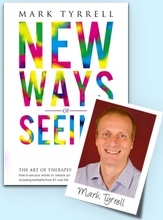
Therapy can and should feel natural and conversational for the client.
“Each person is a unique individual. Hence, psychotherapy should be formulated to meet the uniqueness of the individual’s needs, rather than tailoring the person to fit the Procrustean bed of a hypothetical theory of human behavior.”
– Dr Milton Erickson
A new client recently told me of some online therapy she’d had for depression. It had been sourced through work and paid for by her health insurance.
“It was all form filling, scaling, and administration. To be honest, it felt like I was just part of their bureaucratic procedures. Like I needed to fit in with their way of doing things just so they could tick boxes.”
Ouch.
As I describe here, failure to build rapport fast, to help the client feel they have been uniquely listened to, could end in tragedy. At the very least, it won’t help in avoiding it.
From endless form filling and clunky information taking to one-size-fits-all hypnosis scripts and laborious explanations of what techniques we are going to ‘do’ to someone, the lexicon of bad practice posited as ‘best practice’ is scary.
Therapeutic technique should flow from conversation and feel, as often as possible, like a natural part of the conversation. I teach conversational hypnosis and reframing, but I feel all therapy can and should feel natural and conversational for the client.
So what pointers do I suggest for making therapy more conversational?
Tip one: Put down the clipboard
It’s vital that you come out from behind your notes, at least sometimes, and talk with your client.
Now, some note taking can be rapport building. It lets the client know you are interested in them and want to learn about them and their life and problems. But too much can feel a bit… procedural.
Someone writing down what you say may produce associations with soulless encounters with po-faced customs officials or government bureaucrats.
Imagine if you went to a friend when you were in need and, instead of warmth and welcome, they sat with you assiduously taking notes and asking for information in their terms so that it would fit into their boxes.
Therapeutic intuition is immensely valuable and can, perhaps, be blocked or even wither and die if we just focus on ticking boxes and not perceiving, intuitively as well as logically, what may be going on for a client.
If you do take copious notes, put them down at least sometimes. Try to be with the person, to have them feel this is a normal and flowing conversation. A conversation in which they can feel uniquely listened to and understood, and one that engenders hope. One human being to another.
Of course, you are not simply having a chat with your client. You need to employ therapeutic techniques – but the client doesn’t necessarily need to be aware of them!
Tip two: Make most therapeutic techniques invisible
Technique should be largely invisible. Clients need to feel a sense of flow with you, not feel they are having something done to them.
This isn’t to say formulaic technique isn’t appropriate sometimes. You are not just some interested and pleasant stranger passing the time of day with them, after all. And the power of ritual in therapy can be profound, often helping produce a placebo effect. This is something psychotherapists perhaps don’t always fully appreciate and can be knowingly employed – but even then, as far as possible we should make it comfortable and natural for our clients.
If you use clinical hypnosis, the client should be naturally ready for hypnosis. When it comes time for hypnotic work, it should flow like a wave rising from the natural ebbs and flows of the preceding conversation.
Even when using more structured therapeutic techniques, we need to make them feel congruent, as a natural part of the wider pattern of the session, and at least some of it should be tailored to the client’s unique interests and perspectives.
There is no reason why all the components of a flowing natural and stimulating conversation shouldn’t be included in a therapeutic session.
And that includes one of the most important parts of life.
Tip three: Be humorous
If talking to Hal, the computer from the movie 2001: A Space Odyssey, is okay, then perhaps talking to a completely humourless person can be okay, too – in some circumstances! But for many people, at least the capability of humour (which is not necessarily the same as great wit) is vital for feeling connected. There is plenty of evidence for the benefits of humour in therapy.1,2,3,4
Of course, timing is everything in comedy, humour, and, well, I guess, life in general. So, where appropriate, we can match the client’s humour and even introduce some of our own sometimes.
Apart from anything else, humour is a magnificent therapeutic device. Humour reframes situations and helps illuminate new vistas of meaning. Speaking of which…
Tip four: Reframe conversationally
One male client told me how his controlling ex-wife had threatened to move within a mile of him wherever he went. If she did that, I suggested half-jokingly, who exactly would be pulling the strings? He would get to decide where in the world his ex would be living. He found this really funny, and we created absurd scenarios in which he went to live in a desert, on a mountain range, or outside a motorway service station.
I had delivered a reframe that sprang directly from our proceeding conversation and, in context, was funnier than it sounds (you had to be there!). Immediately his idea of control shifted.
When we help our clients reframe limiting beliefs, we don’t want to be laborious about it or telegraph that we are trying to get them to think in wider or different terms. As powerful as it can be, it needn’t feel that way to the client. Reframes should spring naturally from the conversational flow. Sometimes this is the most important aspect of presenting a reframe – which is why I produced a whole course on conversational reframing.
Reframes need to be experiential, impactful on an emotional level rather than just presented as an idea to be intellectually considered. When this happens the client absorbs them easily and cannot help but see and feel things differently. This is very different from simply trying to get someone to analytically consider something from a different position.
Therapy is as much – perhaps more – an art as a science. It’s about painting intuitively with balance and harmony, not painting by numbers or just spraying paint randomly.
The skilled therapist seems to be conducting a casual conversation, but all the while naturally embodies the soundest of psychotherapeutic principles.
Hide your therapy in ‘everyday’ conversation
The most effective interventions are often those that slip in unnoticed, past the guards keeping your client in their prison. Mark’s course Conversational Reframing will show you how to use language artfully to make therapy more enjoyable and naturalistic for both you and your client, and supercharge your communication skills. Read more here.
Notes:






